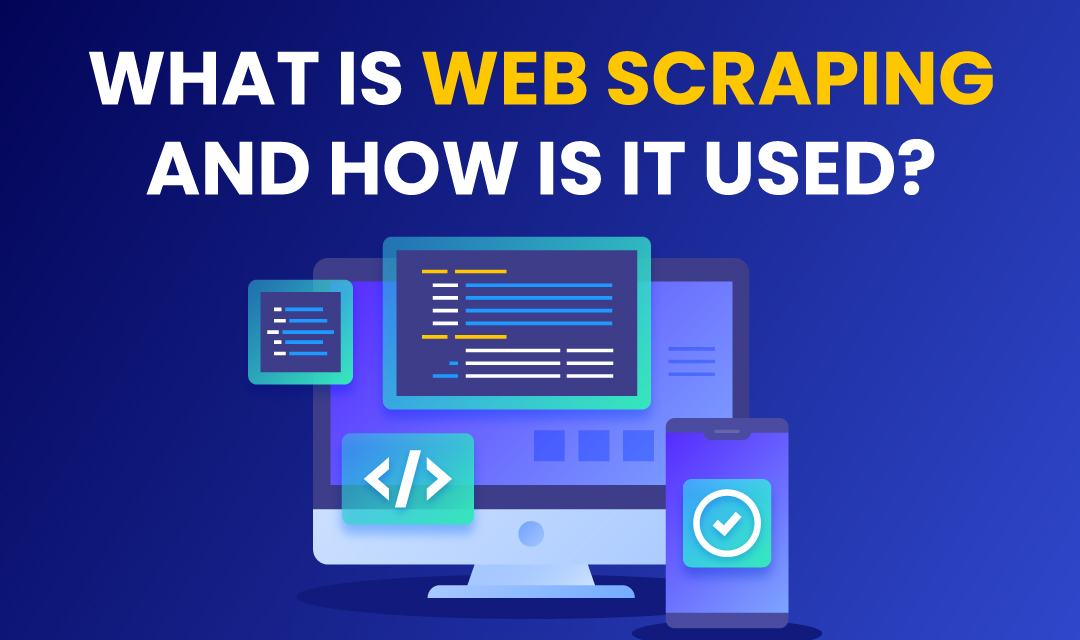
A website like iplocation.net contains a very large amount of geolocation data, and others have historical stock prices, mailing lists, telephone directories, real estate listings, and more. There are many benefits in extracting invaluable data from websites and using them for your own purposes.
What is web scraping?
Web scraping refers to the scraping of data from a website. It involves using automated tools to navigate targeted web pages, retrieve specific data elements, and then transform the collected data into a structured format that can be imported into a database.
What is an example of web scraping?
For example, IP Location provides a correlation between IP addresses and their respective geolocations. There are billions of IPv4 and IPv6 addresses, each tied to its distinct geolocation information. The task of manually extracting this data through copy-and-paste techniques is conceivable but excessively time-consuming. Such an endeavor would span multiple years, and upon its culmination, the data acquired would likely be outdated. Hence, the practice of web scraping is done by automated tools. Data scraping tools scrape data from the web in the format that websites display and transform that data into a more meaningful format that can be exported.
Is web scraping legal?
The act of scraping "public" data from websites is not illegal, but collecting non-public or copyrighted data through web scraping is illegal.
There have been many legal cases for scraping data from websites, and this trend is growing. There are legal and ethical issues concerning web scraping, and the implication and responsibility affect both parties: the provider and the scraper.
What can you do to prevent web scraping?
As a webmaster, there are several measures you can take to deter web scraping activities on your site. There is no foolproof method to completely eliminate scraping, but the following methods can make web scraping more challenging:
- Rate Limiting per IP address: Implement rate-limiting mechanisms on the server to restrict the number of requests a single IP address can make within a specific time frame. This can help prevent mass data extraction. At iplocation.net, we currently allow up to 200 lookup queries per hour per IP to discourage web scraping.
- CAPTCHA: Introduce CAPTCHA challenges for retrieving data on the website, especially those that require repetitive automated requests. CAPTCHAs can help differentiate between human users and automated bots. We use CAPTCHA on our bulk IP lookup page to prevent automated bot queries.
- User-Agent Analysis: Monitor user agent strings in incoming requests, and block queries from non-standard user agents. Some scraping bots use blank or common scraping user agents, and using the user agent to block such requests is fairly simple.
- Session Tracking: Implement session tracking and require users to have valid sessions to access data. This can thwart scraping bots that don't engage in proper sessions.
- Dynamic Content Rendering: Use client-side rendering and dynamic loading of data using JavaScript. Many scraping tools primarily scrape static HTML content, so rendering content dynamically can make scraping more difficult.
- IP Whitelisting: If you're providing your data to known entities, you can create an IP whitelist to only offer information to users you trust. This can help prevent access from unknown scraping sources.
You may also use third-party anti-scraping services to block web scraping. These services employ advanced techniques to detect and block scraping attempts based on patterns, behavior analysis, and IP reputation.
The above measures can make scraping more challenging, but determined scrapers can still find ways to bypass them. It's essential to regularly monitor your website's traffic, analyze patterns, and adapt your anti-scraping strategies as needed.
How do web scrapers circumvent preventative measures?
Circumventing web scraping preventative measures often involves employing more sophisticated techniques. Here are some ways scrapers may attempt to bypass these measures:
- IP Rotation: Scrapers can use a pool of IP addresses to rotate their requests, making it difficult for rate limiting to be effective. Most proxy providers offer this service.
- IP Spoofing: Advanced scrapers can forge IP addresses, making it appear as if requests are coming from different sources and evading IP-based blocking or whitelisting.
- Headless Browsers: Scrapers can use headless browsers, which simulate a full browser experience, including executing JavaScript. This allows them to access dynamically rendered content and bypass static rendering measures.
- User-Agent Rotation: By frequently changing user agent strings in their requests, scrapers can avoid user agent restrictions.
- Session Simulation: Advanced scrapers can simulate user sessions to mimic human behavior and evade session tracking.
- Proxy Services: Scrapers may use proxy servers to hide their true IP addresses, making it harder to identify and block their activity.
- Data Fragmentation: Scrapers can extract data in small fragments over time to avoid rate limits and detection.
- Pattern Randomization: By introducing randomization into their scraping patterns, such as random intervals between requests, scrapers can avoid detection based on predictable behavior.
The techniques used above often require technical expertise, resources, and persistence. It is a constant combat between website owners and scrapers to win over their competitor's measures.
Conclusion
Web scraping involves using automated tools to extract data from websites and transform them into a structured format for storage. The article discusses the concept of web scraping, its benefits, legal considerations, and measures to prevent web scraping activities on a website.
To prevent web scraping, website owners can implement various techniques to make web scraping more challenging. The preventative methods include rate limiting per IP address, using CAPTCHA challenges, analyzing user agents, implementing session tracking, employing dynamic content rendering with JavaScript, and whitelisting trusted IP addresses.
Share this post
Leave a comment
All comments are moderated. Spammy and bot submitted comments are deleted. Please submit the comments that are helpful to others, and we'll approve your comments. A comment that includes outbound link will only be approved if the content is relevant to the topic, and has some value to our readers.




Comments (0)
No comment